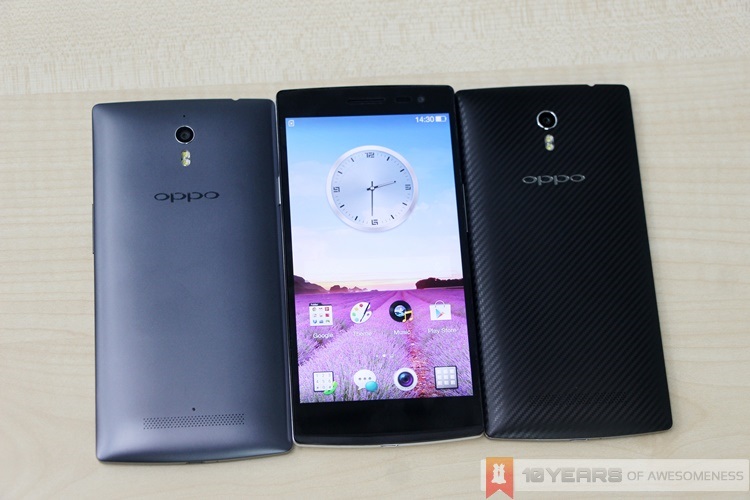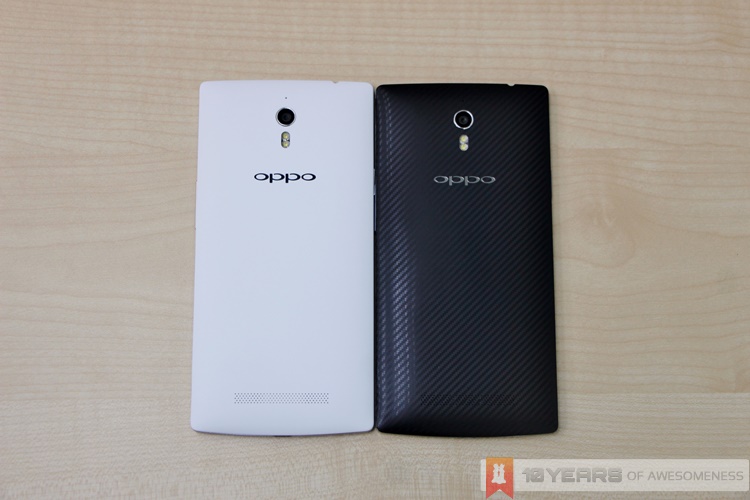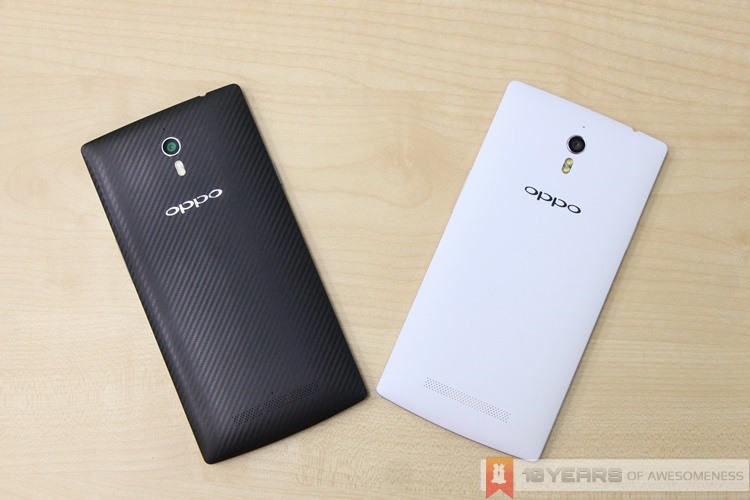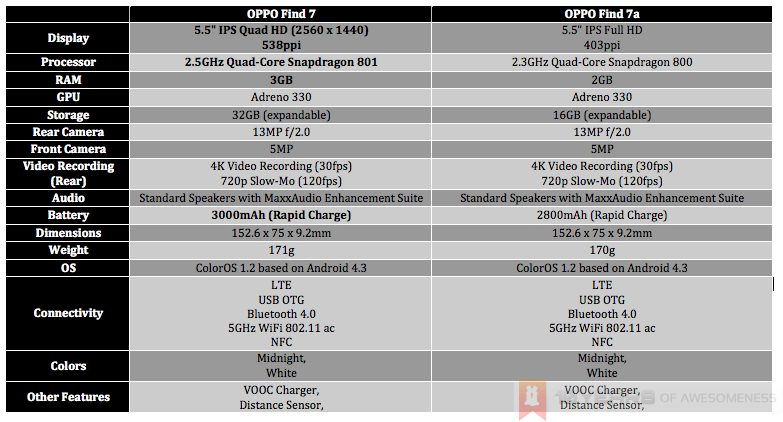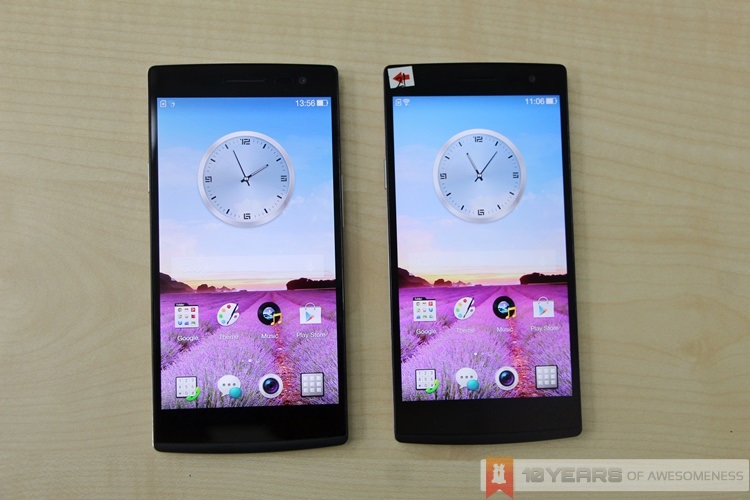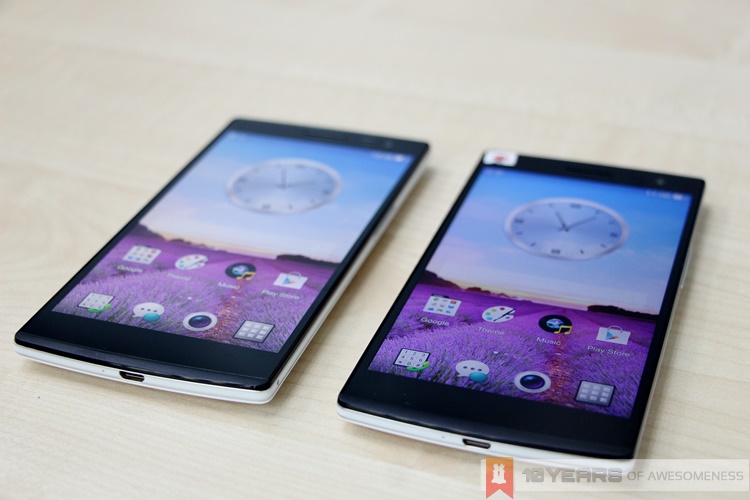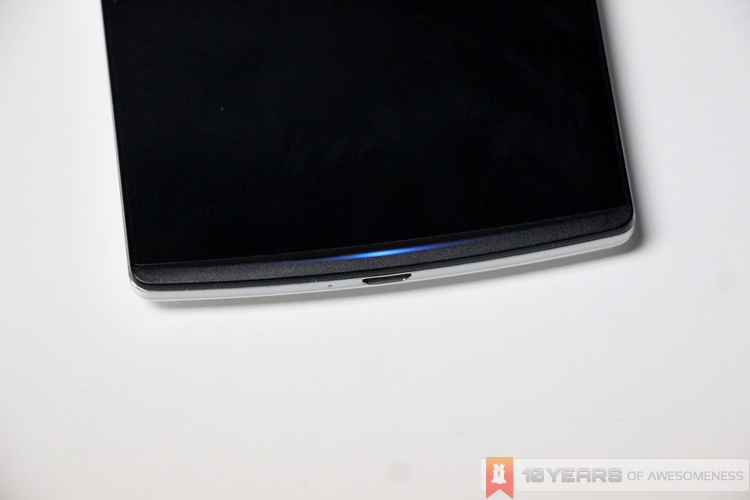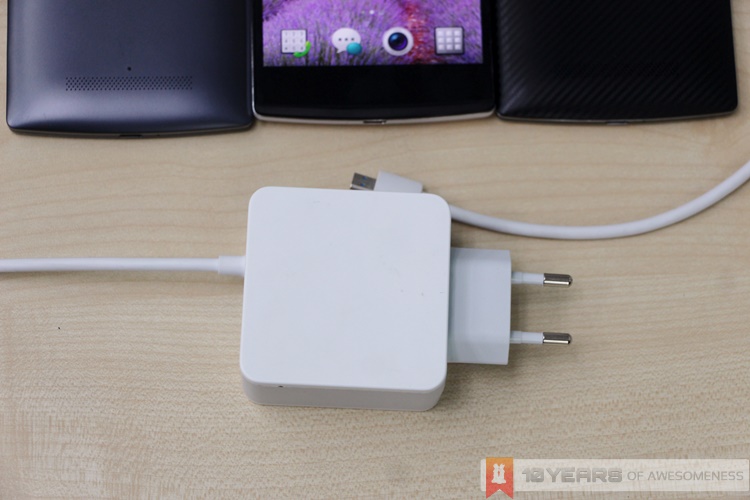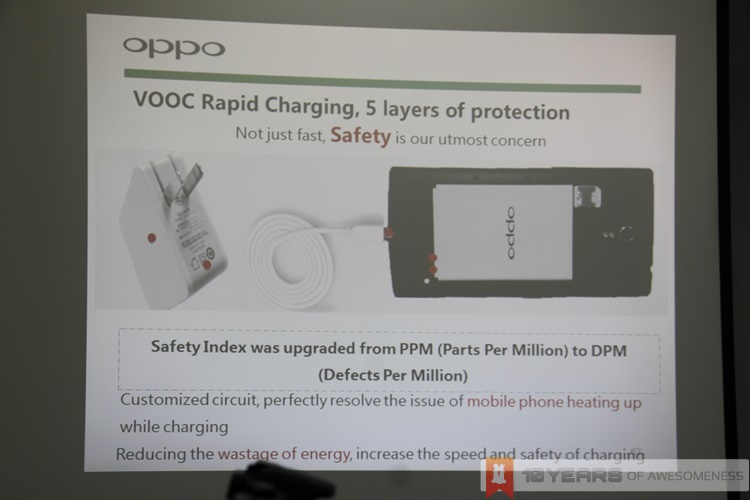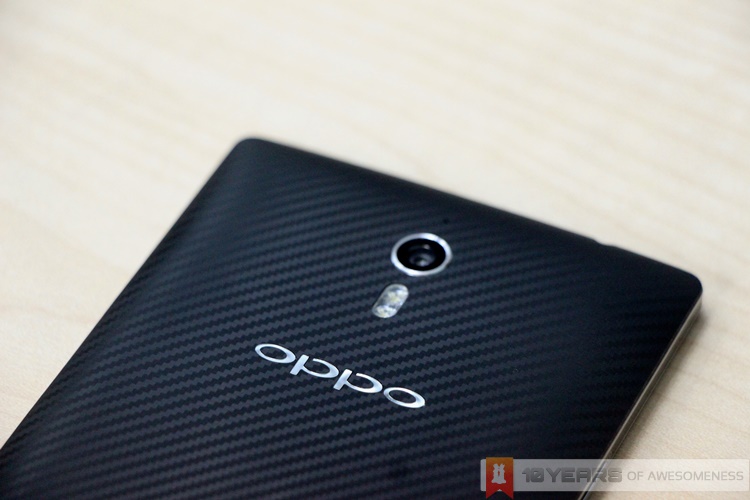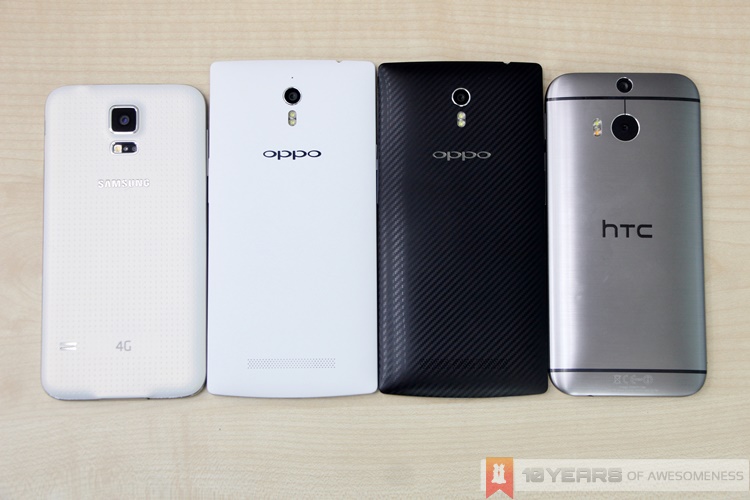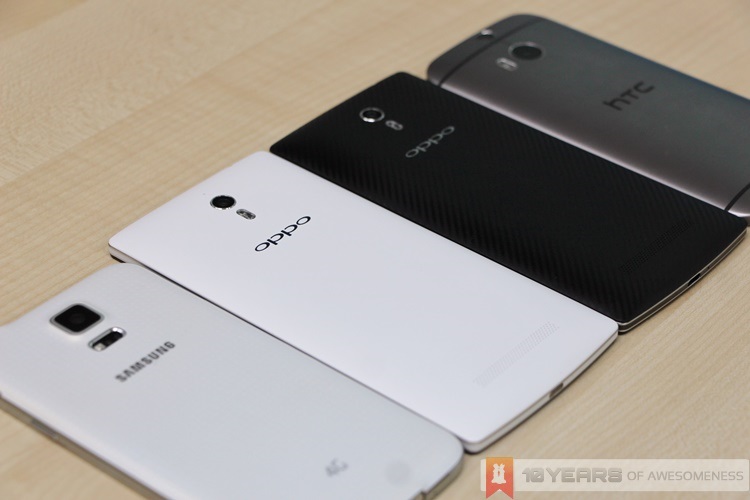
Last week, we were at an exclusive preview to see Oppo’s two latest smartphones coming to Malaysia next week, the flagship Find 7 and the Find 7a. We gave a glimpse of what we saw last Friday evening, and here’s our more expanded hands-on with Oppo’s genuinely exciting new smartphones.
As a quick recap, Oppo launched two smartphones two months ago: the higher-end of the two is called the Find 7, while the slightly lower-end one is called the Find 7a. The Find 7 sports 2014 flagship specs including a 2.5GHz quad-core Qualcomm Snapdragon 801 processor, 3GB RAM, 5.5-inch 2K (2560 x 1440) display, and a 13MP Sony camera sensor.
The Find 7, on the other hand, is no slouch by today’s standards either: it packs a 2.3GHz Qualcomm Snapdragon 800 quad-core chipset with 2GB of RAM, 5.5-inch Full HD display, and the same 13MP Sony sensor as its better-specced sibling.
Here’s a specs comparison of the two Find 7 models:
Essentially, both the Find 7 and Find 7a are the same in dimensions and design, with the Find 7 weighing a mere 1g heavier than the 7a. Previously, the Find 7 was also offered in an exclusive Carbon back cover, featuring an exclusive carbon fibre design, but Oppo has since confirmed that this colourway will also be available in the Find 7a.
At the media preview, we managed to see both the Find 7 and 7a, and everyone present had a tough time telling them apart. One of the Oppo Malaysia reps had even playfully put the Carbon back cover on the Find 7a and told us it was the Find 7; before telling us that the back covers (and even batteries) for both models are interchangeable.
One would also think that with the difference in screen resolution, you’d be able to identify the Find 7 from the 7a…but that is really not the case. Oppo has done a great job with optimizing text and fonts to look exactly the same as on a 1080p display. You’d have to be mere centimetres away before you begin to see pixelation on the Find 7a. On a separate note, the display on the Find 7 is noticeably warmer when displaying white text, while the Find 7a’s whites are more true to life.
It’s not easy to find fault with the Find 7/7a’s design and build quality. At 170g (171g for the Find 7), this 5.5-inch device feels solid without feeling heavy. The back cover also sits flush, and requires a SIM ejector pin to eject a portion of the back cover, where the SIM tray and microUSB card slots lie beneath.
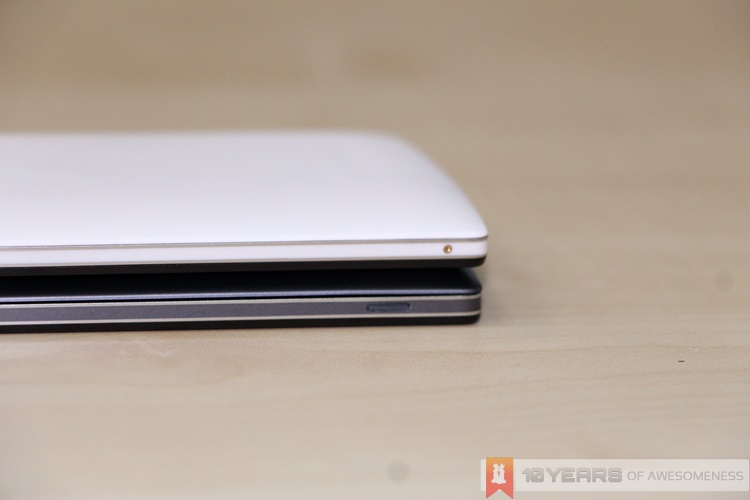 A SIM ejector pin is required to remove the back cover, compared to an older design from a prototype Find 7 (bottom device)
A SIM ejector pin is required to remove the back cover, compared to an older design from a prototype Find 7 (bottom device)
The back covers themselves each have its own unique traits. The White back cover sports a “diamond texture”, which is almost similar to the texturized finish on the Lenovo Vibe Z, but more subtle. You can’t really see it from afar, but you feel it once it’s in your hand. The Carbon back cover, on the other hand, has more of a rubberized soft-touch finish, making it just as grippy as the textured White cover. This is perhaps the first time we’re seeing a product that not only offers different textures and finishes and not just a simple colour option (okay, OnePlus may have something to say about that).
The overall design, too, is easy on the eyes. It’s minimalist and does not try to be flashy in any way. The back cover is as simple as it gets, with the company brand emblazoned below the camera sensor. On the front, there’s no branding whatsoever and is close to being entirely filled with screen and bezel if not for the highly futuristic pulsing notification light, which Oppo claims is like a “flickering light in darkness seems like a beam from the universe”.
By today’s standards, a phablet with 2800mAh or even 3000mAh is considered small. The Samsung Galaxy S5, which has a smaller footprint, sports a 2800mAh battery pack. Unfortunately, those are the battery capacities of the Find 7a and Find 7, respectively. Fortunately, numbers don’t necessarily tell the whole story. The Find 7 and 7a comes packed with a new VOOC Rapid Charging technology, which was developed in-house by Oppo. Everything from the charger adapter, data cable, pin connector, battery and the circuitry in both the battery and charger has been customised – but the phone still supports standard microUSB 2.0 cables and pins. As a result, Oppo claims the Find 7 models will charge from 0 to 75% in just 30 minutes. That is some claim, and one that we’ll definitely try in our review.
On the other hand, Oppo’s engineers also made sure that the VOOC Rapid Charging technology was not dangerous in any way. To prevent any potential mishaps, VOOC Rapid Charging has five layers of protection, including tweaks to the customised circuit to prevent overheating.
Both the Find 7 and Find 7a run on the new ColorOS 1.2, which is based on Android 4.3. There’s a host of tweaks under the hood to improve overall performance, but one of the most noticeable additions lie with what was previously known as screen off gestures. Previously, you were only limited to about five screen off gestures, but now there are about a dozen of them, ranging from the simple double-tap to the more complex “M” and “W” gestures.
Blank screen gestures, as they are now known, lets you do virtually anything from one gesture. You can wake the device, turn on the flashlight, control music playback, and even assign gestures to call a number or open an app. The possibilities here are almost limitless, but do mind that if you’ve got a PIN code set up, you can’t bypass that with a blank screen gesture.
One other gesture that I’ve come to really appreciate in my brief time with the Find 7a is double-tapping the home key to lock the device. It’s such a simple gesture, and one I use a lot these days when I’m at my desk and the phone is just lying horizontally. I can double-tap the screen to wake it, read any notifications or reply messages and emails, and just double tap the home button to put it back to sleep. So, so simple.
And then, there’s the Find 7 and 7a’s new camera. Touted as the world’s first smartphones to use Sony’s IMX 214 13MP sensor, this new camera sensor has an f/2.0 aperture, six plastic lenses and a blue glass filter. The front sensor, on the other hand, is a 80-degree wide-angle 5MP sensor with an f/2.0 aperture with 5 plastic lenses. The brain behind the sensor is Oppo’s own, newly-developed Pure Image 2.0 engine.
Together, the sensor and image engine lets the Find 7/7a feature plenty of imaging prowess, from Tracking Focus, Super Zoom, 4K video recording, 720p slow-motion recording, a massive 32-second slow shutter mode, and Ultra HD. No, not the resolution, but a new feature of the Find 7/7a’s camera.
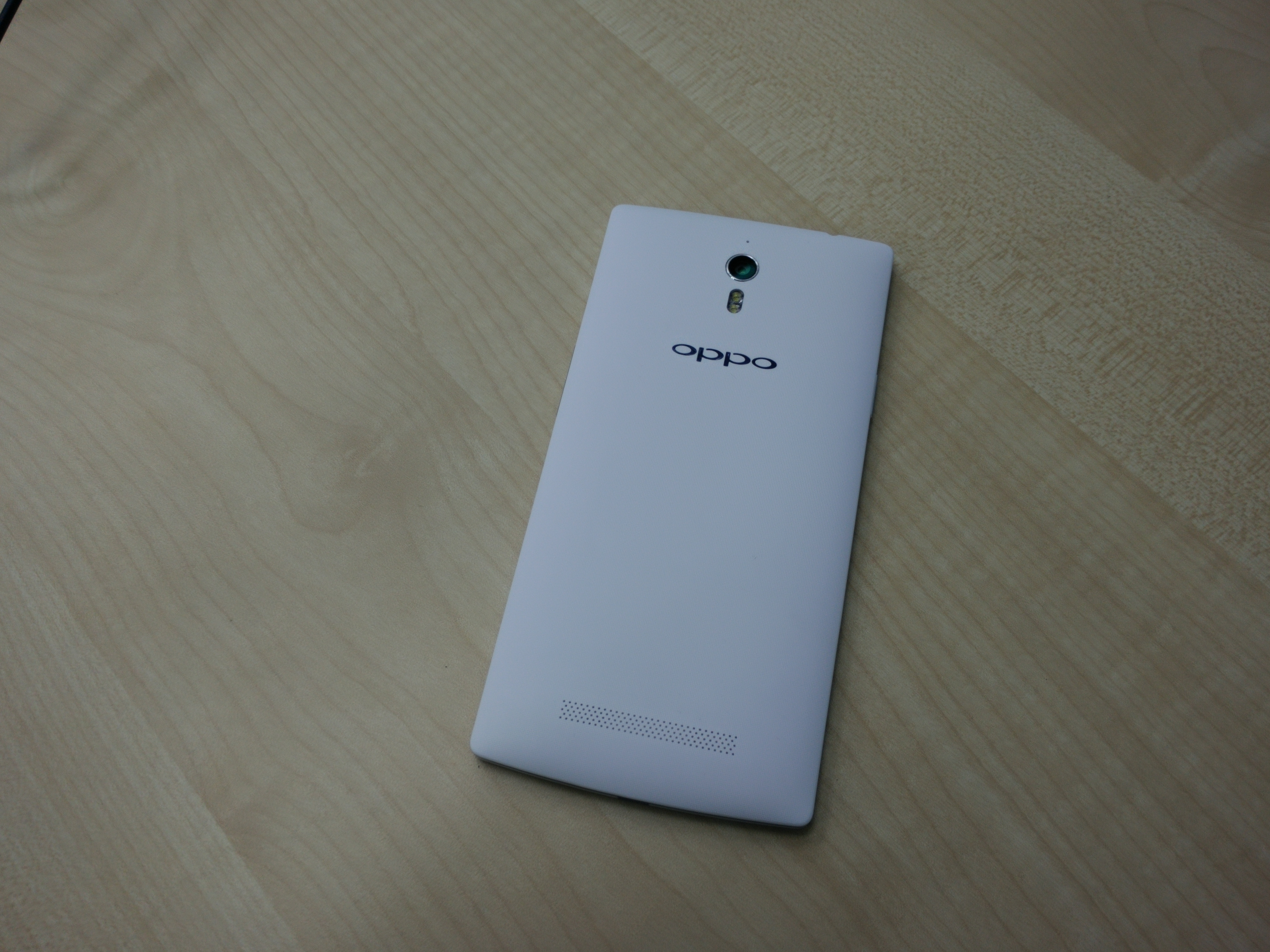 Resized sample image – click for full resolution (caution: 9.7MB file!)
Resized sample image – click for full resolution (caution: 9.7MB file!)
Essentially, when a user snaps a picture in Ultra HD mode, the sensor captures ten shots in succession. Through some software magic, the information captured in these ten images are then compressed into one single 50MP image (8160 x 6120 resolution).
With such a competitive price, both the Find 7 and Find 7a are really, really compelling Android smartphones. It doesn’t hurt either that they look good and feel great in the hands. We’ve got a Find 7a in for review – the Find 7 isn’t expected to arrive until next month, at the earliest – so stay tuned for our review!
Follow us on Instagram, Facebook, Twitter or Telegram for more updates and breaking news.


